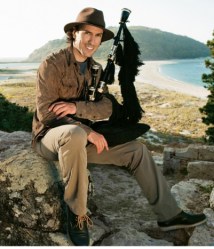 M. and I have been hitting the deep woods one day a week as part of the annual Mushroom Hunt. Yesterday was an odd one.
M. and I have been hitting the deep woods one day a week as part of the annual Mushroom Hunt. Yesterday was an odd one.
Actually, the previous hunt, six days earlier, was even stranger. First, I had a full-blown hallucination of a nice Boletus edulis (king bolete, steinpilz, etc.) I walked over to the spot — and there was no mushroom. Then I looked above five or six feet away, and there it was. The spirits were playful.
In his excellent book Shroom: A Cultural History of the Magic Mushroom, Andy Letcher uses the term “bemushroomed” to mean being under the influence of entheogenic mushrooms consumed internally.
But maybe there is another sense wherein you are just in their force field. Every mushroom hunter knows the perceptual shift of not seeing any — and then you enter the “field” and you are seeing them everywhere.
Only maybe you lose track of other things, such as where you are.
Usually, M. is trance-ier in the woods than I am. I — having gotten lost in these densely forested mountains before — am always reality-checking: “OK, the boggy meadow is north — that’s to the right. I am walking downhill, so west; therefore, the road is about a quarter-mile behind me. But what’s that little knob? — I don’t recognize it.”
So having mushrooms moving around in my perceptual field was — different.
Then, after two hours or so, we are back at the Jeep, and she is looking stricken and slapping at her pants pockets. Her Opinel mushroom knife, a Christmas present, is gone! We retrace part of our steps but don’t spot it. She remembers cutting some Albatrellus confluens — not super-tasty, but they bulk up a soup.
Yesterday we returned to that area. I thought I remembered — to within an acre or so — where that patch of confluens might be, marked off by three weathered white-fir trunks that had fallen like three sides of a square.
So we set off in that general direction, and I more or less walked right to the spot. There was the knife. (Thanks, mushroom spirits!) After six days in the weather, the wooden handle had swollen, making it hard to open and close, but some time in the sunshine has fixed that.
But in the six days that had passed, the woods had changed again. Three hours of looking produced only one shopping bag of mushrooms. Our two favorite species had just vanished (or were too rotten to pick). But we were out there, in the “mushroom field.”
It is said that gathering wild mushrooms is dangerous. If you ask me, dealing with log trucks on narrow Forest Service roads is the real danger.
There was Asshole Log Truck Driver, who wanted the Jeep as a hood ornament. I “felt” him coming and pulled over until my right wheels were in the ditch before he blasted around the bend (Thanks, mushroom spirits).
But then there was Considerate Log Truck Driver who not only was driving conservatively downhill with his load, but who pulled over to let us pass.
Why couldn’t they have been reversed — meet CLTD head-on and go down the grade behind ALTD? Well, you take what you can get.



















 A fairly straight-forward article on one of the Denver area’s longer-lived occult bookstores, Isis Books,
A fairly straight-forward article on one of the Denver area’s longer-lived occult bookstores, Isis Books,